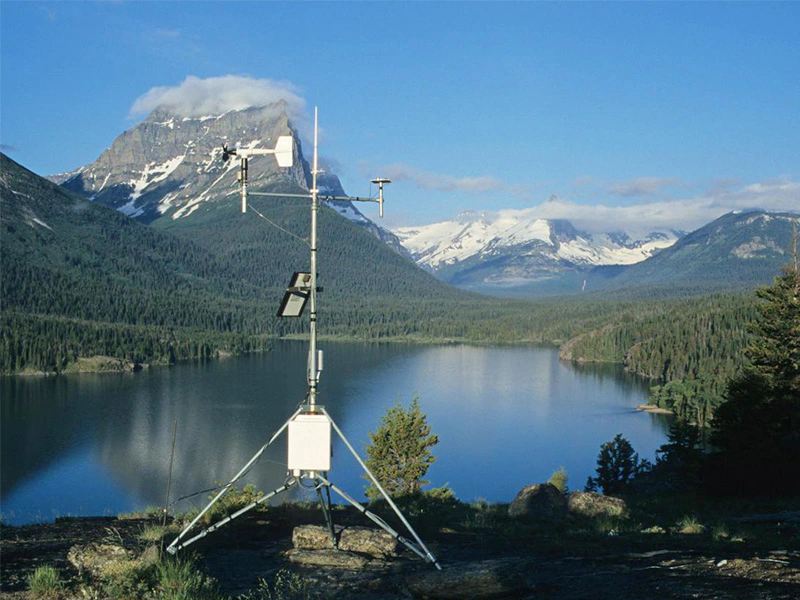
# Meteorological Station: Monitoring Weather Patterns and Climate Data
## Introduction to Meteorological Stations
A meteorological station is a facility equipped with instruments and equipment designed to observe and record atmospheric conditions. These stations play a crucial role in weather forecasting, climate research, and environmental monitoring. They collect data on various weather parameters that help scientists understand and predict weather patterns.
## Key Instruments at a Meteorological Station
Modern meteorological stations are equipped with sophisticated instruments that measure different atmospheric conditions:
### Temperature Measurement
Thermometers measure air temperature, while soil thermometers track ground temperature variations.
### Precipitation Gauges
These devices measure the amount of liquid precipitation (rain) or solid precipitation (snow, hail) that falls over a specific period.
### Anemometers and Wind Vanes
Anemometers measure wind speed, while wind vanes determine wind direction – both critical for weather forecasting.
### Barometers
These instruments measure atmospheric pressure, which is essential for predicting weather changes and storm systems.
### Hygrometers
Used to measure humidity levels in the air, providing data about moisture content in the atmosphere.
## Types of Meteorological Stations
### Surface Weather Stations
These are the most common type, located at ground level to measure surface weather conditions.
### Upper-Air Stations
Equipped with radiosondes (weather balloons) that collect data from higher atmospheric layers.
### Automated Weather Stations
Modern stations that automatically collect and transmit data without constant human supervision.
### Agricultural Weather Stations
Specialized stations that monitor conditions specifically important for farming and crop management.
## Importance of Meteorological Data
The data collected from meteorological stations serves multiple purposes:
Weather Forecasting
Accurate weather predictions help in disaster preparedness, agriculture, and daily life planning.
Climate Research
Long-term data collection helps scientists understand climate patterns and climate change.
Aviation Safety
Pilots and air traffic controllers rely on weather data for safe flight operations.
Marine Navigation
Shipping routes and fishing operations depend on accurate weather information.
## Challenges in Meteorological Monitoring
While meteorological stations provide invaluable data, they face several challenges:
Maintaining equipment in harsh weather conditions can be difficult and costly.
Establishing stations in remote areas presents logistical challenges for installation and maintenance.
Ensuring data accuracy requires regular calibration and quality control measures.
Integrating data from different types of stations and sources requires sophisticated systems.
## Future of Meteorological Stations
Technological advancements are transforming meteorological monitoring:
Satellite Integration
Ground stations increasingly work in conjunction with satellite data for comprehensive coverage.
IoT Technology
Internet of Things enables more widespread deployment of automated weather sensors.
AI and Machine Learning
Advanced algorithms help process vast amounts of weather data more efficiently.
Citizen Science
Personal weather stations contribute to more dense data networks in urban areas.
Meteorological stations remain fundamental to our understanding of weather and climate. As technology advances, these stations will continue to evolve, providing more accurate and comprehensive data to help us navigate an increasingly complex climate system. Their role in protecting lives, property, and supporting various economic sectors cannot be overstated.
Keyword: meteorological station